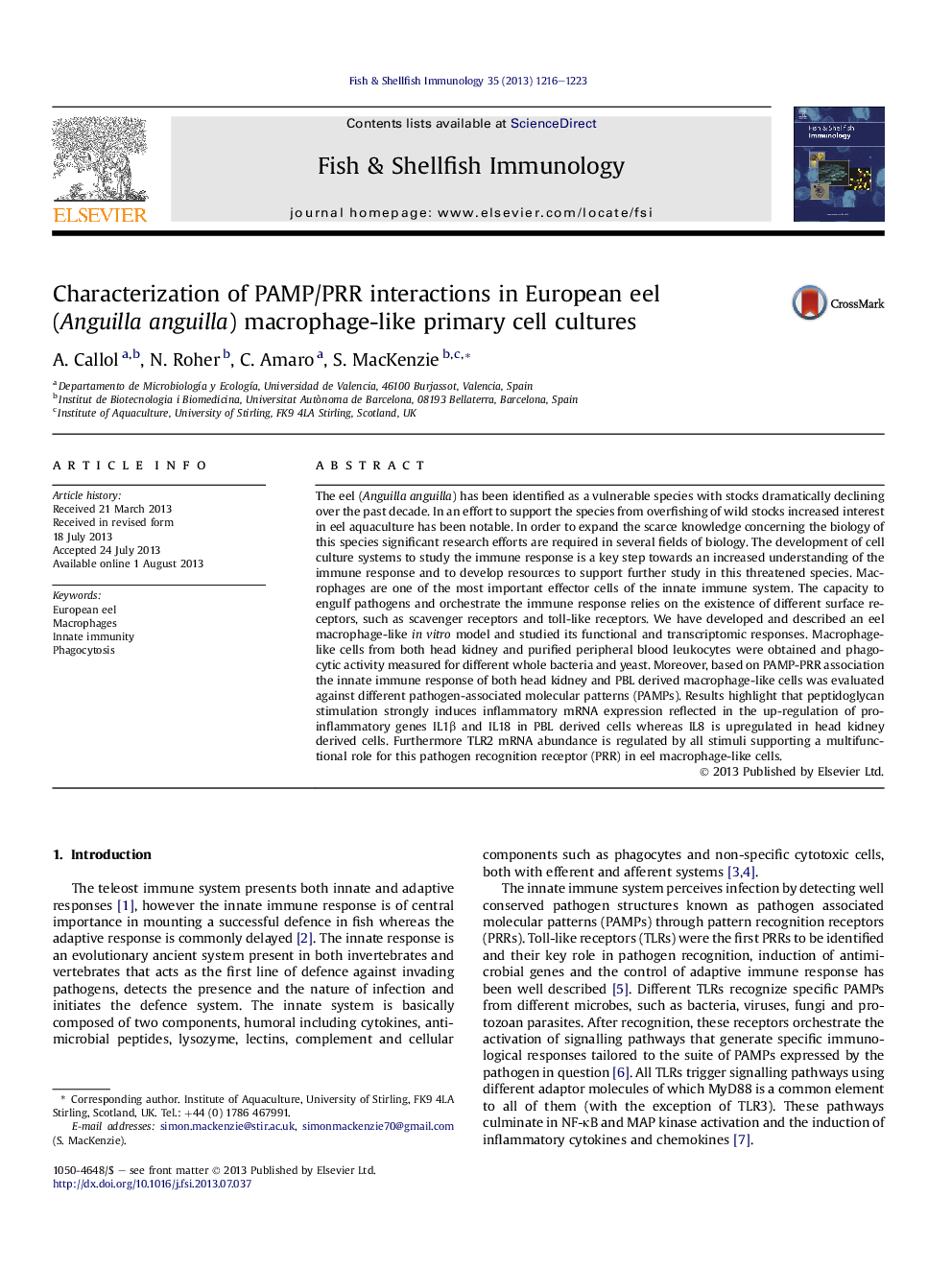| Article ID | Journal | Published Year | Pages | File Type |
|---|---|---|---|---|
| 2431477 | Fish & Shellfish Immunology | 2013 | 8 Pages |
•Development of a novel eel macrophage-like primary cell culture.•Functional analysis of whole cell, bacteria and yeast, phagocytosis.•Evaluation of PAMP-PRR driven responses in eel macrophage-like cells.•Characterization of PAMP-PRR responses in view of differentiation status and tissue origin.
The eel (Anguilla anguilla) has been identified as a vulnerable species with stocks dramatically declining over the past decade. In an effort to support the species from overfishing of wild stocks increased interest in eel aquaculture has been notable. In order to expand the scarce knowledge concerning the biology of this species significant research efforts are required in several fields of biology. The development of cell culture systems to study the immune response is a key step towards an increased understanding of the immune response and to develop resources to support further study in this threatened species. Macrophages are one of the most important effector cells of the innate immune system. The capacity to engulf pathogens and orchestrate the immune response relies on the existence of different surface receptors, such as scavenger receptors and toll-like receptors. We have developed and described an eel macrophage-like in vitro model and studied its functional and transcriptomic responses. Macrophage-like cells from both head kidney and purified peripheral blood leukocytes were obtained and phagocytic activity measured for different whole bacteria and yeast. Moreover, based on PAMP-PRR association the innate immune response of both head kidney and PBL derived macrophage-like cells was evaluated against different pathogen-associated molecular patterns (PAMPs). Results highlight that peptidoglycan stimulation strongly induces inflammatory mRNA expression reflected in the up-regulation of pro-inflammatory genes IL1β and IL18 in PBL derived cells whereas IL8 is upregulated in head kidney derived cells. Furthermore TLR2 mRNA abundance is regulated by all stimuli supporting a multifunctional role for this pathogen recognition receptor (PRR) in eel macrophage-like cells.
